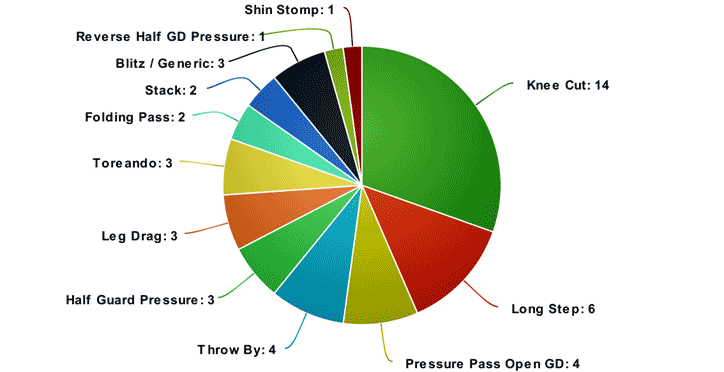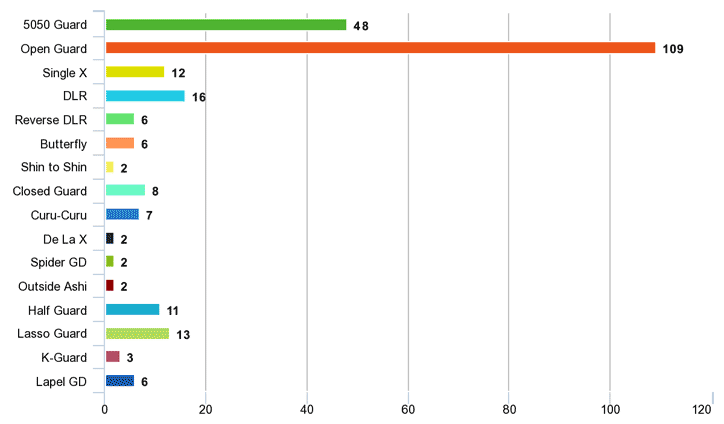
Being the natural data hoarder and preparing for a BJJ competition, I decided to double down from learning a wide array of skills to focusing on a few that work. I’ve taken this approach from similar skills in the investing arena. For example, certain investors have events that they specialize in really slay those spots. In my case, it’s a bit of the opposite; I don’t know much about the competitive landscape, but I still have a bit of room to drill and refine my competition game plan. As a result, I decided to look at the data of many BJJ competitions to decide on which submissions I would focus on.
The top submissions I will focus on
Based on a few sources, I ended up focusing on drilling:
Rear naked choke
Armbar
Triangle
Collar chokes
Almost half of the submissions from the 2023 IBJJF World Championship were rear naked chokes, which is not surprising given that getting back is such an advantageous position. Armbars come in second at 21%, which means they are available a quarter of the time. In third, triangles lead the pack more than double any other lower segment.
Some of you might be asking, why did I include collar chokes? Well, I am going to focus on competing in the GI division, but besides that, it actually has a high success rate once you get the hang of it. Data has shown it to have 75% success rate. On the other hand, armbars have a 49% success rate, rear naked chokes have a 42% success rate, and triangles have a 38% success rate.
What about MMA?
Not surprisingly, MMA is kind of like no-gi BJJ. As a result, the rear naked chokes account for 49% finishes. This means that doing BJJ competitions should also help out MMA practitioners due to the similar statistics of finishes from BJJ events.
What about passing guard?

I know fundamentals classes teach a few ways to pass guard, but based on the data, I am focusing on knee cuts.
What about countering guard passes?

The chart above is kinda jank, but it’s trying to say where most sweeps tend to happen. In this case, it’s open guard. It makes sense since your legs are in a good spot to mess up their balance.
Wrapping Up
I'm going to post more interesting data like this when I spot’em. But as someone who does not have a favored game plan yet, I think doing what others tend to do successfully as a whole is a good start. It tends to work well in other events, like video game competitions where people follow a ‘meta’ or current state of playing style. So why not for BJJ?



